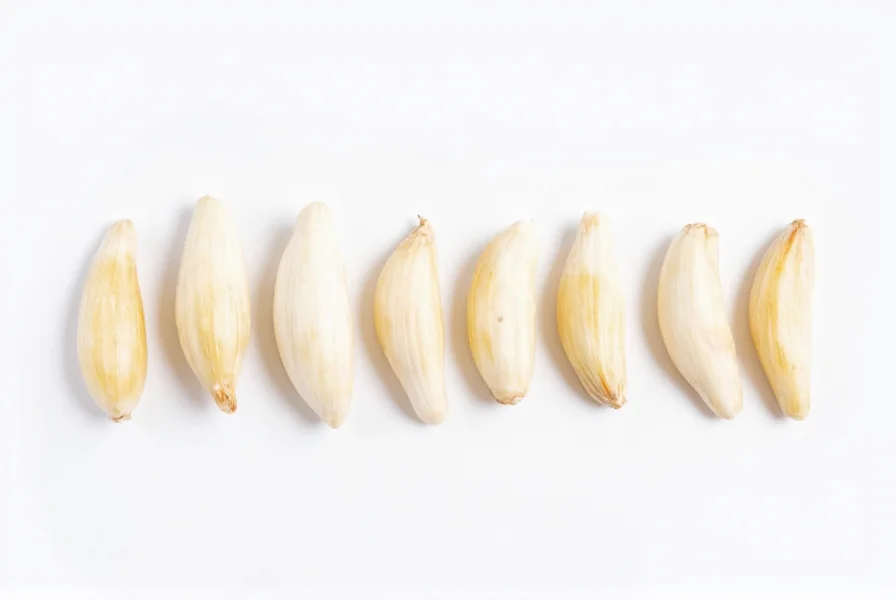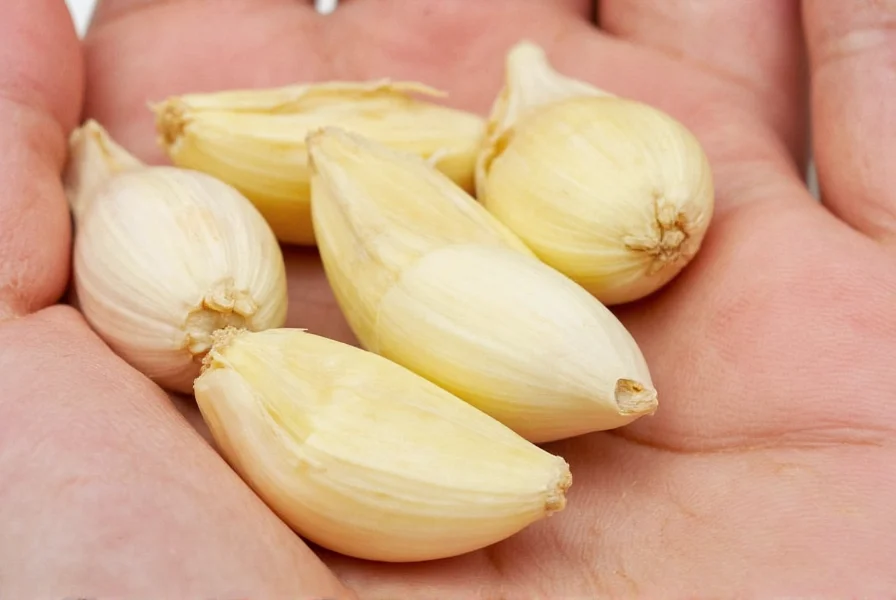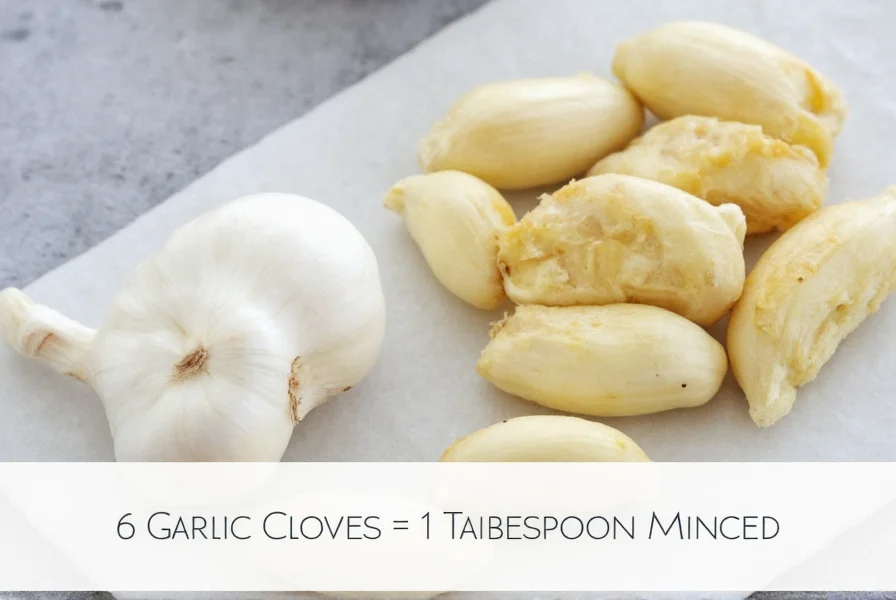Understanding garlic measurements is crucial for home cooks and professional chefs alike. When recipes call for tablespoons of minced garlic but you're working with whole cloves, knowing the exact conversion prevents flavor imbalances in your dishes. This guide provides accurate measurements, practical conversion charts, and professional tips to ensure your culinary creations achieve perfect garlic proportions every time.
Garlic Measurement Fundamentals
Garlic measurements can be confusing because cloves vary significantly in size. A single garlic bulb typically contains 10-12 cloves, but these range from small (less than 1 inch) to jumbo (over 2 inches). This natural variation affects how much minced garlic you'll obtain from each clove.
The standard conversion accepted by culinary professionals is:
| Garlic Form | Equivalent Measurement |
|---|---|
| 1 small garlic clove (1/2 inch) | 1/4 teaspoon minced |
| 1 medium garlic clove (1 inch) | 1/2 teaspoon minced |
| 1 large garlic clove (1/2 inch) | 3/4 teaspoon minced |
| 3 medium garlic cloves | 1/2 tablespoon minced |
| 6 medium garlic cloves | 1 tablespoon minced |
Factors Affecting Garlic Measurements
Several variables influence the precise conversion between whole cloves and measured tablespoons:
Clove Size Variability
Garlic cloves naturally differ in size even within the same bulb. When precision matters, consider sorting cloves by size before preparation. Professional kitchens often use calibrated garlic presses that deliver consistent results regardless of clove size.
Preparation Method
The way you prepare garlic significantly impacts volume:
- Minced: Finely chopped garlic yields the most compact measurement
- Chopped: Larger pieces create air pockets, reducing density
- Pressed: Garlic press yields slightly more volume than hand-mincing
- Roasted: Roasted cloves shrink by 30-40%, altering conversion ratios
Moisture Content
Freshly harvested garlic contains more moisture than cured garlic, affecting weight and volume. Store-bought garlic has typically been cured for 2-3 weeks, resulting in more consistent measurements.

Practical Measurement Techniques
For home cooks without professional kitchen tools, these techniques ensure accurate garlic measurements:
The Water Displacement Method
Fill a tablespoon measure with water, then add minced garlic until the water reaches the top. The garlic displaces the water, giving you an accurate tablespoon measurement regardless of air pockets.
Weight-Based Measurement
For ultimate precision, use a kitchen scale:
- 1 tablespoon minced garlic = 8-9 grams
- 1 medium garlic clove = 3-4 grams (peeled)
Visual Reference System
When scales aren't available, use these visual cues:
- 1 teaspoon minced garlic = size of a standard dice
- 1 tablespoon minced garlic = size of a walnut
- 1 whole medium clove = size of your thumb tip
Recipe Substitution Guidelines
Understanding garlic clove to tablespoon conversion helps when adapting recipes:
Fresh to Prepared Garlic
When substituting fresh garlic for jarred minced garlic:
- 1 tablespoon fresh minced garlic = 1/2 tablespoon jarred minced garlic
- Reduce liquid content slightly when using jarred garlic (it contains preservative liquid)
Dried Garlic Conversions
For emergency substitutions:
- 1 garlic clove = 1/8 teaspoon garlic powder
- 1 garlic clove = 1/4 teaspoon garlic flakes
- 1 garlic clove = 1/2 teaspoon granulated garlic
Remember that dried garlic has more concentrated flavor but lacks the aromatic complexity of fresh garlic. Always adjust to taste after cooking.

Storage Tips for Pre-Measured Garlic
To maintain flavor integrity when preparing garlic in advance:
- Store minced garlic in an airtight container with a thin layer of olive oil
- Refrigerate for up to 5 days (longer storage develops bitter compounds)
- Freeze minced garlic in ice cube trays with oil for longer storage
- Avoid plastic containers which can absorb garlic odors and affect flavor
Professional Chef Insights
Top culinary professionals emphasize that garlic measurement isn't just about volume. The timing of garlic addition affects flavor intensity more than precise measurements. Adding garlic early in cooking mellows its flavor, while adding it near the end preserves its pungency. This technique often matters more than whether you use 5 or 6 cloves for that tablespoon measurement.
FAQ: Garlic Measurement Questions
How many garlic cloves make half a tablespoon of minced garlic?
Three medium-sized garlic cloves yield approximately half a tablespoon of minced garlic. For small cloves, you'll need 4-5, while large cloves may require only 2-3 for the same measurement.
Does roasting garlic change the clove to tablespoon conversion?
Yes, roasting reduces garlic volume by 30-40% as moisture evaporates. You'll need approximately 40% more raw cloves to achieve the same tablespoon measurement after roasting. For one tablespoon of roasted minced garlic, start with 8-9 medium cloves.
Can I use garlic powder instead of fresh cloves in recipes?
Yes, but with adjustments. One garlic clove equals 1/8 teaspoon of garlic powder. For one tablespoon of fresh minced garlic (6 cloves), use 3/4 teaspoon garlic powder. Remember that garlic powder lacks the aromatic complexity of fresh garlic, so you may need to adjust other seasonings.
Why does my minced garlic measurement seem less than expected?
Air pockets between chopped pieces can make minced garlic appear less dense. Properly packed minced garlic should be pressed into the measuring spoon without excessive compression. Using the water displacement method provides the most accurate measurement by eliminating air gaps.
How does garlic variety affect the clove to tablespoon conversion?
Different garlic varieties have varying densities. Hardneck varieties (like Rocambole) typically yield 10-15% more minced garlic per clove than softneck varieties. Elephant garlic, despite its name, is actually a leek and yields nearly twice the volume of regular garlic cloves.











 浙公网安备
33010002000092号
浙公网安备
33010002000092号 浙B2-20120091-4
浙B2-20120091-4